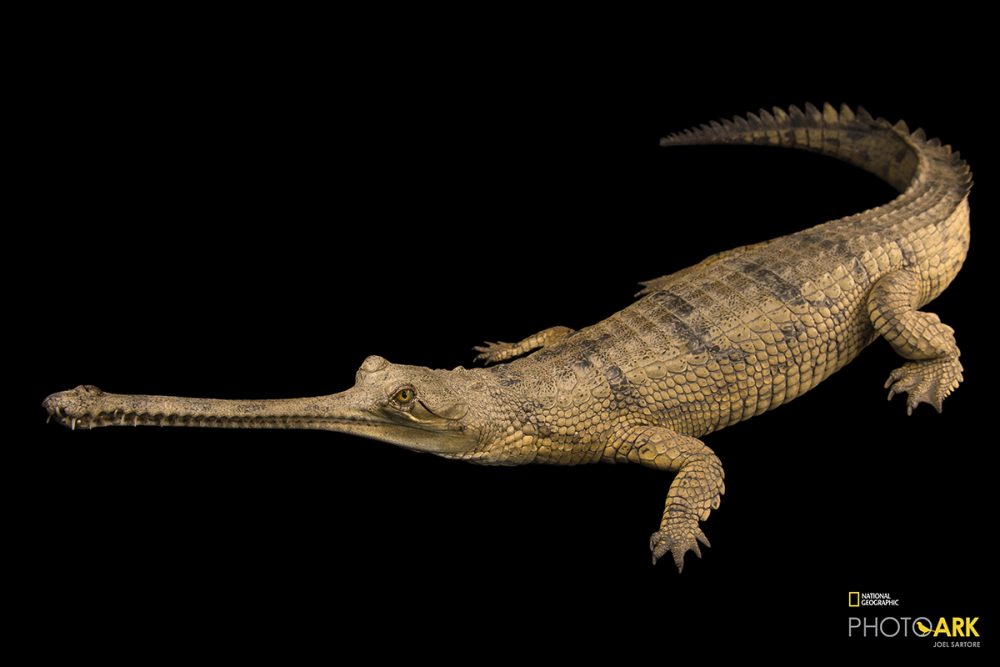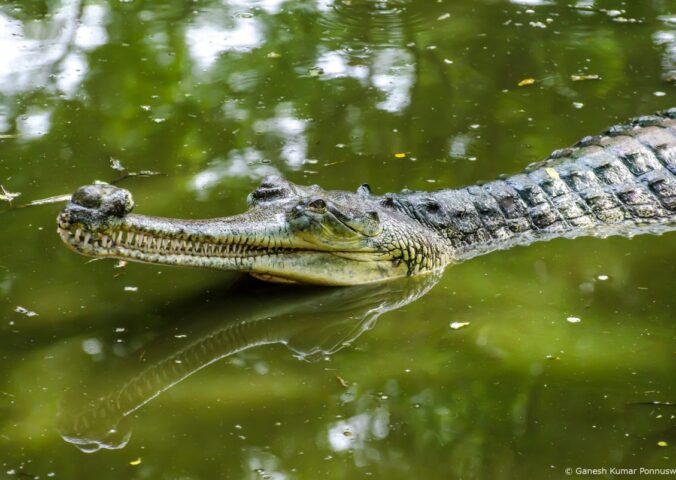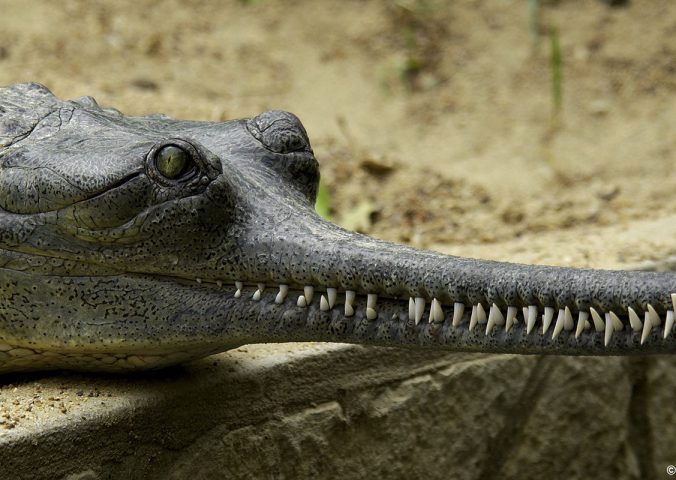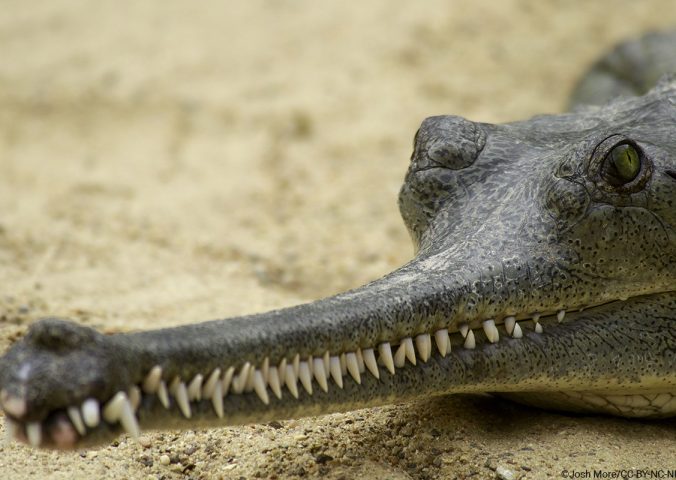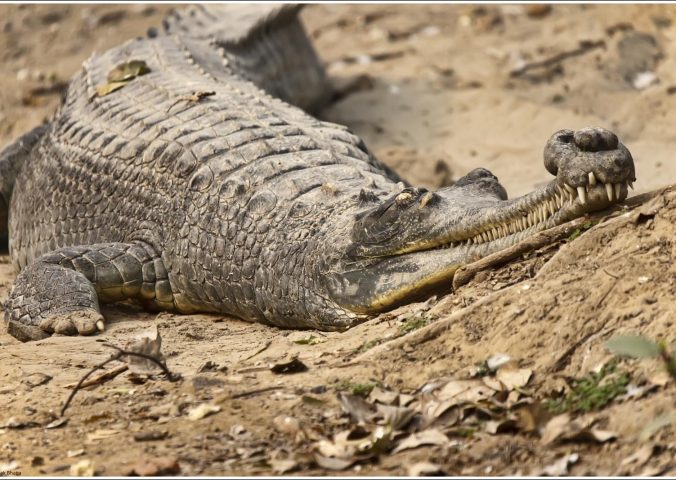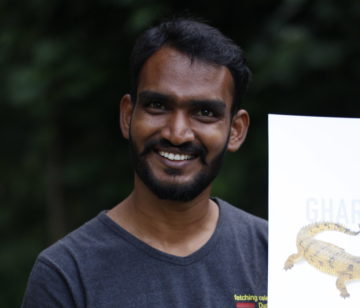About
The Critically Endangered gharial is an unmistakable crocodile on the brink of extinction. It has long, thin jaws which it uses to catch fish and males have a large, bulbous growth, known as a ‘ghara’, on the tip of their snout.
The ‘ghara’ is named after a traditional Indian pot, and forms the basis of the common name of the species, ‘gharial’. Gharials are the only crocodiles with such an obvious difference between males and females. These large crocodiles were once widespread across the Indian subcontinent but are now restricted to as few as five severely fragmented and depleted populations across India and Nepal.
Gharials were long considered to be the sole representative of the family Gavialidae, but recent evidence also places another species, the ‘false gharial’ (Tomistoma schlegelii), in the family. Gharials last shared a common ancestor with the false gharial around 20 million years ago and, together, they diverged from all other crocodilians more than 40 million years ago. This was around the same time humans last shared a common ancestor with capuchin and squirrel monkeys!
Sadly, these unique crocodiles face a multitude of threats to their existence. The damming of rivers across their range is altering their habitat significantly and, as gharials cannot walk on land as well as other crocodilians, they cannot readily disperse to other waterways. Increased agricultural and grazing pressure is also negatively impacting the nesting and basking habitat of the gharial. Gharials are impacted by fishing pressure in two ways: the lack of prey due to overfishing and accidental capture in gill nets of adult and subadult individuals. Gharials are also persecuted by local fishermen and hunted for their ‘ghara’, penises and fat for use in traditional medicine. Finally, local tribes collect the eggs of gharials for food.
The gharial is listed as Critically Endangered by the IUCN Red List as a result of catastrophic population declines, which have seen the population decline by up to 98% since the 1940s. There are now though to be fewer than 250 adult individuals remaining in the wild. The gharial is listed on CITES Appendix I and CMS Appendix I, and several conservation initiatives are underway. The crocodile occurs in protected areas, though this has not completely eliminated many of the threats to the species. Conservation breeding programmes have been established but reintroductions have proven ineffective.
- Order: Crocodylia
- Family: Gavialidae
- Population: <250
- Trend: increasing
- Size: 6m (?)
- Weight: 160kg (?)
EDGE Score
Distribution
The gharial was once found across Bangladesh, Bhutan, India, Myanmar, Nepal and Pakistan. It currently survives in several severely fragmented populations in India and Nepal.
Habitat and Ecology
The gharial is highly aquatic and inhabits rivers with high sand banks and deep pools that support large fish populations. These sand banks are used for nesting, which occurs during the dry season. Females nest in holes excavated in the banks, where they lay 30 to 50 of the largest eggs produced by any crocodilian. Females do not carry hatchlings in their mouth like many other species, but do engage in active maternal care following hatching.
The species feeds primarily on fish but larger individuals may take other vertebrate prey. The function of the ‘ghara’ is hypothesised to be that of a visual indicator of the sex of the individual, though it may also be used for other associated sexual behaviours.
